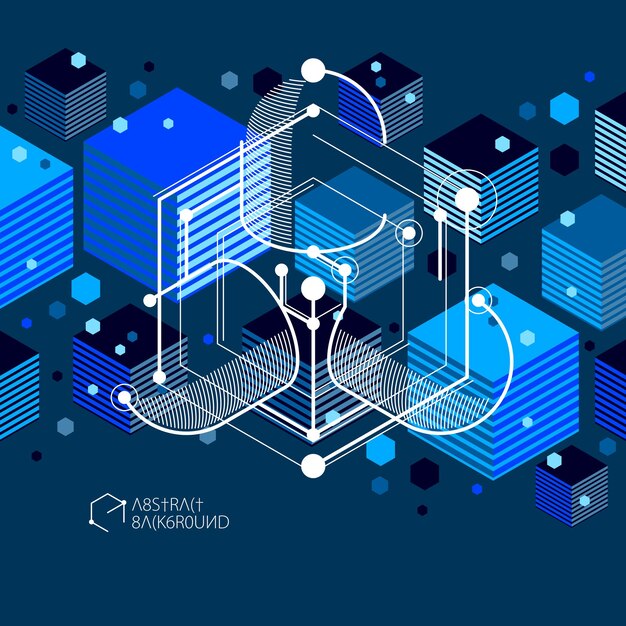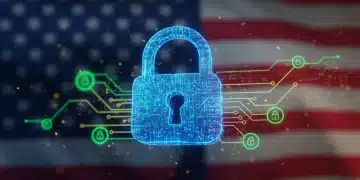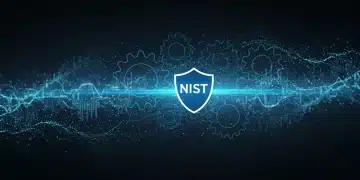NIST Cybersecurity Framework 2.0: Is Your Company Ready for 2025?

The NIST Cybersecurity Framework 2.0, expected in 2025, introduces significant updates, including expanded guidance on supply chain risk management, identity management, and zero trust architecture, requiring companies to proactively assess and update their cybersecurity posture to ensure compliance and resilience.
The cybersecurity landscape is constantly evolving, and with it, so do the frameworks that help organizations protect themselves. The upcoming **NIST Cybersecurity Framework 2.0** release in 2025 represents a significant update that businesses need to prepare for now.
Understanding the NIST Cybersecurity Framework
The NIST Cybersecurity Framework (CSF) is a widely used set of guidelines and best practices designed to help organizations manage and reduce cybersecurity risk. Originally released in 2014, it provides a structured approach to improving cybersecurity posture by focusing on five core functions: Identify, Protect, Detect, Respond, and Recover.
These functions are further broken down into categories and subcategories, offering a detailed roadmap for organizations to assess their current cybersecurity capabilities and identify areas for improvement. The CSF is not a one-size-fits-all solution; rather, it is designed to be adaptable and scalable to meet the unique needs of different organizations, regardless of size or industry.

The Core Functions and Their Importance
Each of the five core functions plays a critical role in a comprehensive cybersecurity strategy:
- Identify: This function focuses on developing an understanding of the organization’s current cybersecurity risks and vulnerabilities. It involves identifying critical assets, business processes, and the regulatory environment in which the organization operates.
- Protect: The Protect function involves implementing safeguards to prevent cybersecurity incidents. This can include access controls, data encryption, security awareness training, and the use of security technologies like firewalls and intrusion detection systems.
- Detect: This function focuses on the ability to detect cybersecurity incidents in a timely manner. It involves implementing monitoring systems, establishing incident alert thresholds, and developing procedures for investigating potential security breaches.
- Respond: The Respond function outlines the actions an organization should take when a cybersecurity incident occurs. This includes incident containment, eradication, and communication with stakeholders.
- Recover: The Recover function focuses on restoring systems and data after a cybersecurity incident. It involves developing recovery plans, conducting regular backups, and testing recovery procedures.
The NIST Cybersecurity Framework provides a flexible and comprehensive approach to cybersecurity risk management. By adopting the framework, organizations can improve their ability to protect their assets, detect and respond to incidents, and recover from disruptions.
Key Changes Expected in NIST Cybersecurity Framework 2.0
The upcoming NIST Cybersecurity Framework 2.0 is expected to bring several significant changes and enhancements to the original framework. These updates are intended to address emerging cybersecurity threats, incorporate lessons learned from real-world incidents, and reflect the evolving needs of organizations.
While the specific details of the updates are still being finalized, several key areas of focus have been identified. Understanding these changes is crucial for organizations to proactively prepare for the transition and ensure their cybersecurity practices remain effective.
Expanded Guidance on Supply Chain Risk Management
Supply chain risk management is expected to receive increased attention in the CSF 2.0. Organizations are becoming increasingly reliant on third-party vendors and service providers, which can introduce new cybersecurity vulnerabilities. The updated framework is likely to provide more detailed guidance on how to assess and manage these risks.
Enhanced Focus on Identity Management
Identity management is another area expected to receive greater emphasis in CSF 2.0. As organizations move towards cloud-based services and remote work environments, effective identity management practices are essential for securing access to sensitive data and systems. The updated framework is likely to include more specific recommendations on implementing multi-factor authentication, privileged access management, and other identity-related controls.

Incorporation of Zero Trust Architecture Principles
Zero trust is a security model based on the principle of “never trust, always verify.” It assumes that all users and devices, both inside and outside the organization’s network, are potential threats. CSF 2.0 is expected to incorporate zero trust principles to help organizations build more resilient and secure systems.
The NIST Cybersecurity Framework 2.0 is expected to introduce several key changes and enhancements, including expanded guidance on supply chain risk management, enhanced focus on identity management, and incorporation of zero trust architecture principles. Organizations should proactively prepare for these changes to ensure their cybersecurity practices remain effective and aligned with industry best practices.
Assessing Your Current Cybersecurity Posture
Before diving into the specifics of CSF 2.0, it is essential to assess your organization’s current cybersecurity posture. This involves evaluating your existing security controls, identifying vulnerabilities, and understanding your overall risk profile.
A thorough assessment will provide a baseline against which to measure progress as you implement the changes required by the updated framework. It will also help you prioritize your efforts and allocate resources effectively.
Conducting a Gap Analysis
A gap analysis is a systematic process for comparing your organization’s current cybersecurity practices against the requirements of CSF 2.0. This involves reviewing each of the core functions, categories, and subcategories to identify areas where your organization falls short.
The gap analysis should be conducted by a team of cybersecurity experts with a deep understanding of both the NIST Cybersecurity Framework and your organization’s business processes. The results of the analysis should be documented in a clear and concise report that outlines the specific gaps that need to be addressed.
Using Maturity Models
Maturity models provide a structured way to assess the maturity of your organization’s cybersecurity capabilities. These models typically define several levels of maturity, ranging from ad hoc to optimized.
- Level 1: Initial/Ad Hoc: Cybersecurity processes are undefined and reactive.
- Level 2: Developing: Some cybersecurity processes are defined, but they are not consistently implemented.
- Level 3: Defined: Cybersecurity processes are documented and consistently implemented.
- Level 4: Managed: Cybersecurity processes are measured and improved over time.
- Level 5: Optimizing: Cybersecurity processes are continuously improved and aligned with business objectives.
By using a maturity model, you can gain a clearer understanding of your organization’s current cybersecurity capabilities and identify areas where you need to focus your efforts.
Assessing your current cybersecurity posture is essential for preparing for the NIST Cybersecurity Framework 2.0. Conducting a gap analysis and using maturity models can help you identify vulnerabilities and prioritize your efforts.
Developing a Roadmap for Implementation
Once you have assessed your current cybersecurity posture and identified the gaps that need to be addressed, the next step is to develop a roadmap for implementing the changes required by CSF 2.0. This roadmap should outline the specific tasks that need to be completed, the resources required, and the timeline for implementation.
A well-defined roadmap will help you stay on track and ensure that you are making progress towards your cybersecurity goals. It will also make it easier to communicate your plans to stakeholders and secure their support.
Prioritizing Tasks Based on Risk
Not all cybersecurity risks are created equal. Some risks are more likely to occur, and some have the potential to cause more damage. When developing your implementation roadmap, it is important to prioritize tasks based on the level of risk they address.
Assigning Responsibilities and Setting Deadlines
For each task on your roadmap, you should assign a specific individual or team responsible for its completion. You should also set realistic deadlines for each task.
Assigning responsibilities and setting deadlines will help ensure that tasks are completed on time and that everyone is clear about their roles and responsibilities.
Developing a roadmap for implementation is essential for successfully adopting the NIST Cybersecurity Framework 2.0. Prioritizing tasks based on risk and assigning responsibilities and setting deadlines will help ensure that you stay on track and achieve your cybersecurity goals.
Training and Awareness Programs
Implementing the NIST Cybersecurity Framework effectively requires a strong focus on training and awareness. Employees are often the first line of defense against cyberattacks, and it is essential to equip them with the knowledge and skills they need to identify and respond to threats.
A well-designed training and awareness program should cover a range of topics, including phishing awareness, password security, data protection, and incident reporting.
Developing a Comprehensive Training Curriculum
The training curriculum should be tailored to the specific needs of your organization and the roles of different employees. It should be delivered in a variety of formats, including online modules, classroom training, and hands-on exercises.
Conducting Regular Awareness Campaigns
- Phishing Simulations: Sending simulated phishing emails to employees to test their ability to identify and report suspicious messages.
- Security Newsletters: Sharing the latest cybersecurity news and tips with employees on a regular basis.
- Lunch and Learns: Holding informal training sessions during lunch breaks to cover specific cybersecurity topics.
Training and awareness programs are a critical component of a comprehensive cybersecurity strategy. By investing in training and awareness, you can empower your employees to become a valuable asset in your organization’s fight against cybercrime.
Continuous Monitoring and Improvement
Cybersecurity is not a one-time project; it is an ongoing process. Once you have implemented the NIST Cybersecurity Framework, it is essential to continuously monitor your security controls and identify areas for improvement.
This involves regularly testing your security controls, reviewing your incident response plans, and staying up-to-date on the latest cybersecurity threats.
Regularly Testing Security Controls
Penetration testing involves simulating real-world cyberattacks to identify vulnerabilities in your systems. Vulnerability scanning involves using automated tools to identify known vulnerabilities in your software and hardware.
Staying Up-to-Date on the Latest Threats
Subscribe to threat intelligence feeds, participate in industry forums, and attend cybersecurity conferences to stay informed about the latest threats and vulnerabilities.
Continuous monitoring and improvement are essential for maintaining a strong cybersecurity posture. By regularly testing your security controls and staying up-to-date on the latest threats, you can ensure that your organization is prepared to defend itself against cyberattacks.
| Key Aspect | Brief Description |
|---|---|
| 🛡️ Framework Update | NIST CSF 2.0 is coming in 2025 with key updates. |
| 🔍 Risk Assessment | Evaluate current cybersecurity posture to identify gaps. |
| 🧑🏫 Training Programs | Educate employees on cybersecurity best practices. |
| 🔄 Continuous Monitoring | Regularly monitor and improve security measures. |
Frequently Asked Questions (FAQ)
▼
The NIST Cybersecurity Framework (CSF) is a set of guidelines for organizations to manage and reduce cybersecurity risks. It offers a structured approach, focusing on identifying, protecting, detecting, responding to, and recovering from cyber threats.
▼
The NIST Cybersecurity Framework 2.0 is expected to be released in 2025. This update will include changes to address new cybersecurity threats and reflect the evolving needs of organizations.
▼
Key changes in CSF 2.0 include expanded guidance on supply chain risk management, enhanced focus on identity management, and incorporation of zero trust architecture principles to improve overall security.
▼
To prepare, organizations should assess their current cybersecurity posture, conduct a gap analysis, develop a roadmap for implementation, and invest in training. Continuous monitoring is also essential.
▼
Continuous monitoring ensures that security controls are effective and identifies areas for improvement. It involves regularly testing security, staying updated on threats, and adjusting strategies to stay ahead of cyberattacks.
Conclusion
Preparing for the NIST Cybersecurity Framework 2.0 is a critical step for any organization looking to strengthen its cybersecurity posture. By understanding the key changes, assessing your current state, and developing a plan for implementation, you can ensure that your organization is ready to face the challenges of tomorrow’s threat landscape.





